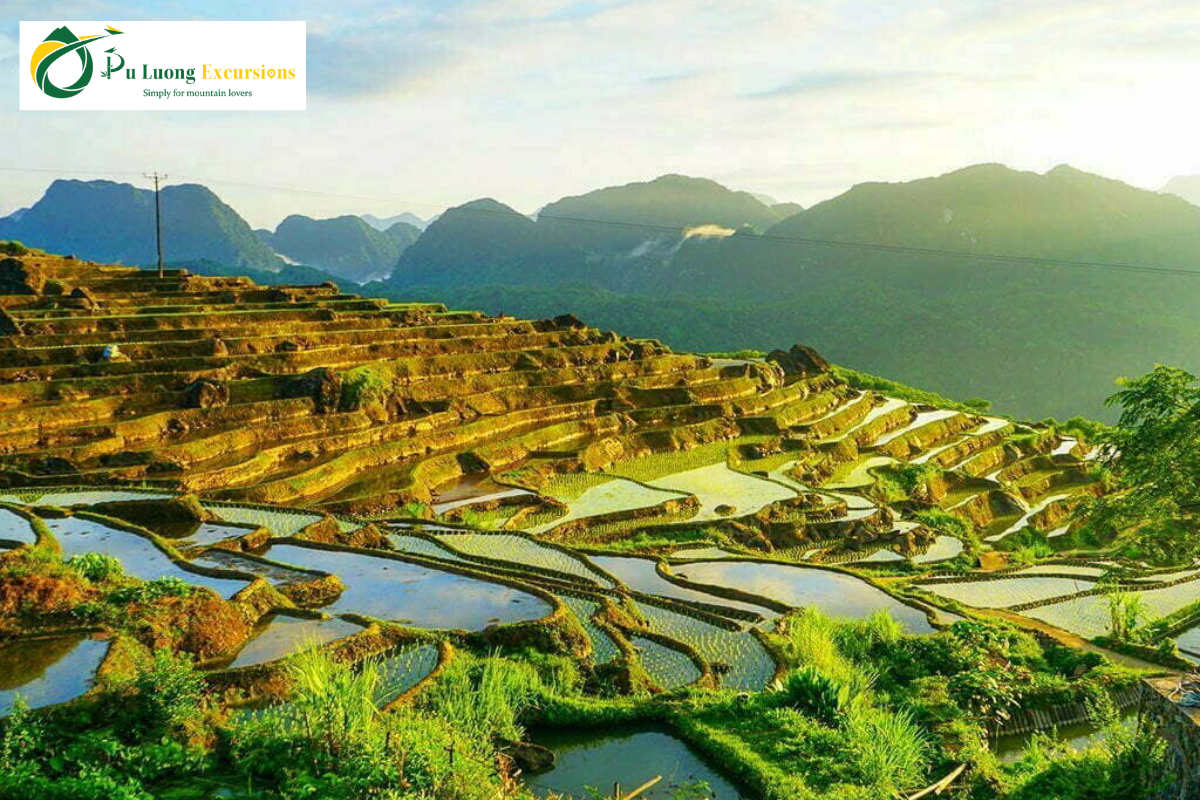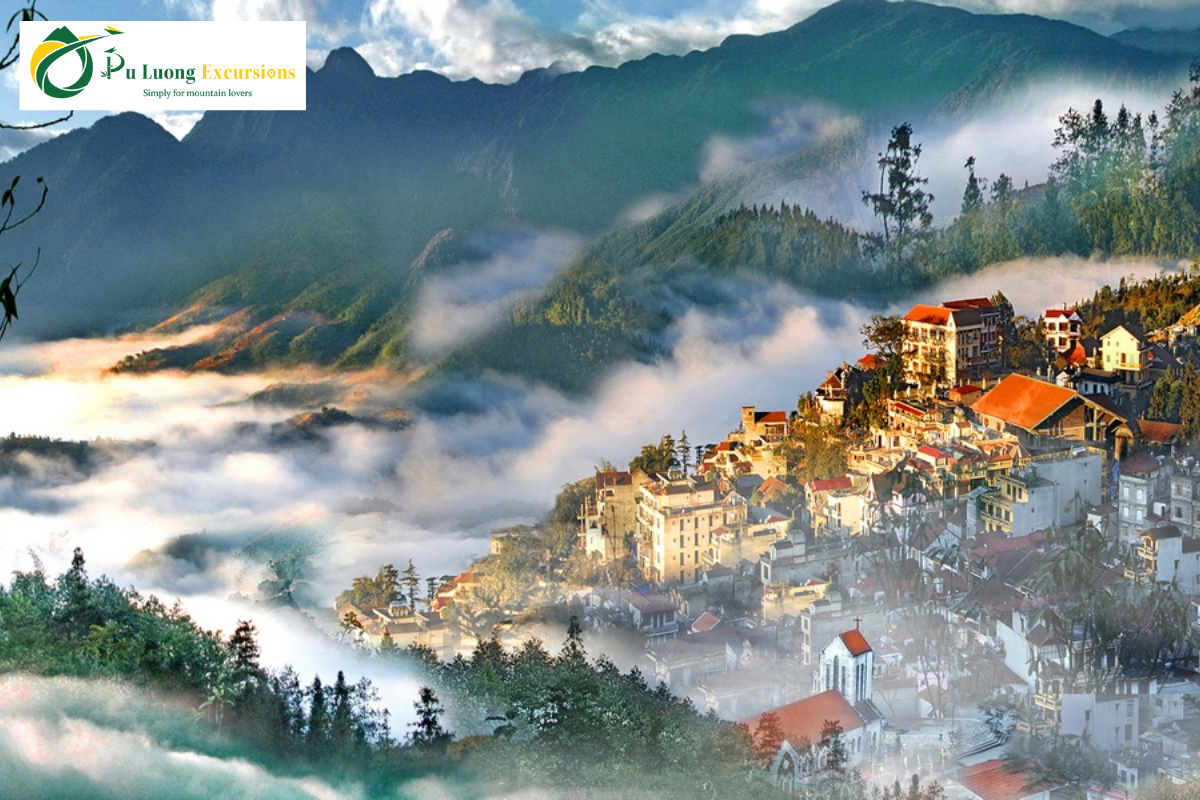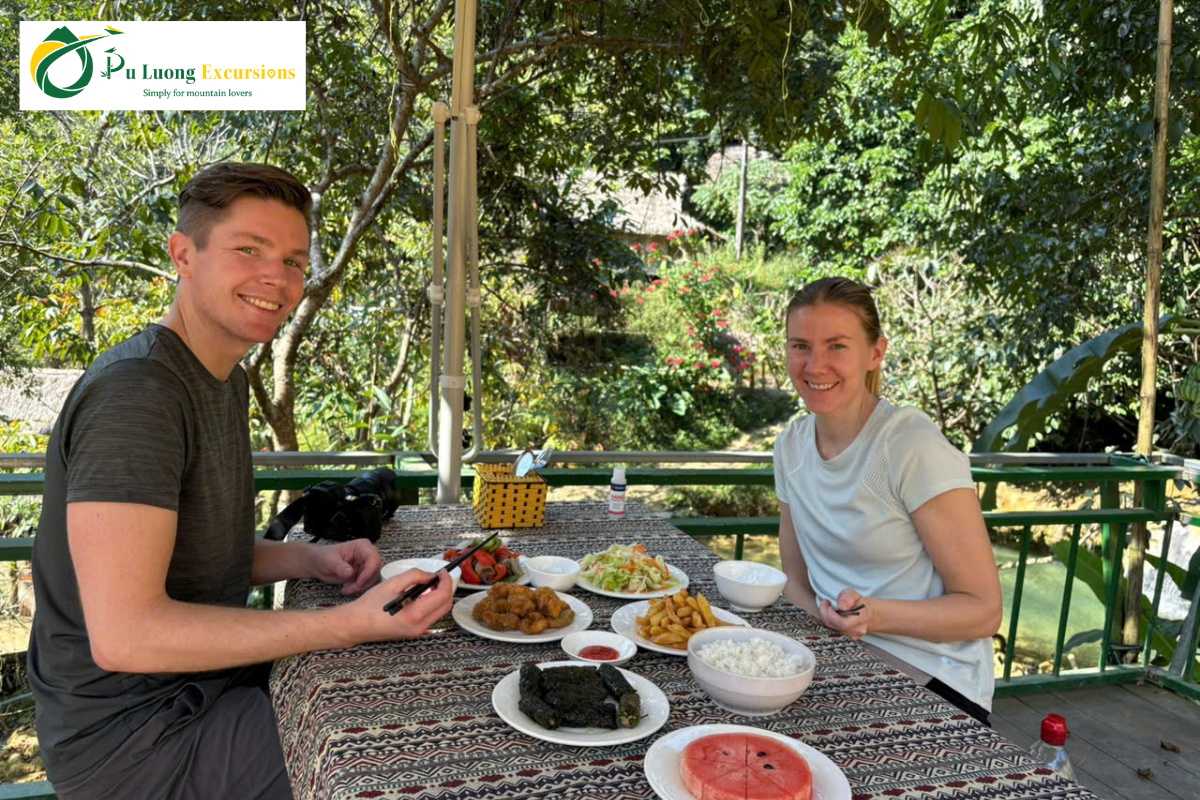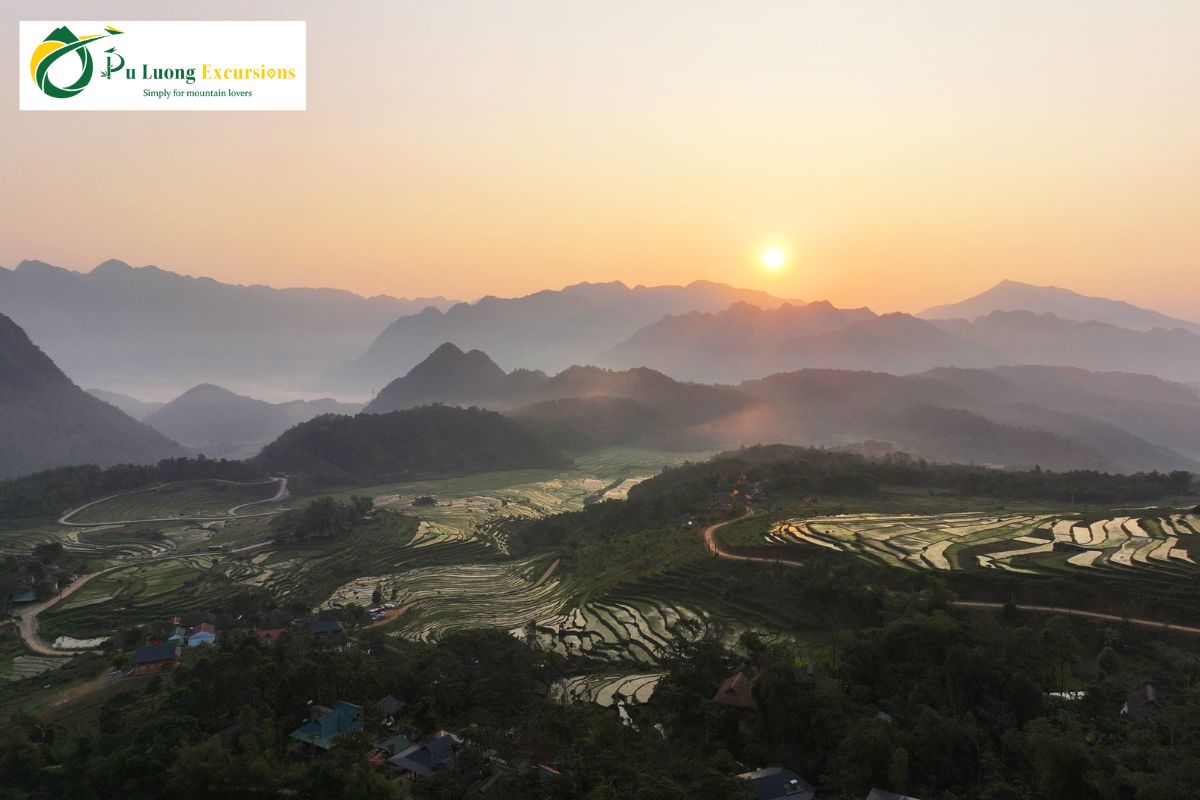
When travelers plan their adventure to Northern Vietnam, two names always stand out — Pu Luong and Sapa. Both are stunning mountain destinations known for rice terraces, ethnic cultures, and cool weather. Yet, each offers a very different kind of experience.
Wondering whether to visit Pu Luong or Sapa? Discover key differences in landscape, culture, weather, and travel experience to choose your perfect Northern Vietnam adventure.
Introduction to Sapa and Pu Luong
Before diving into details, let’s set the scene.
Pu Luong Nature Reserve lies in Thanh Hóa Province, about 160 km west of Hanoi — roughly a 4-hour drive (depending on traffic and route). It is tucked between mountain ranges, with deep valleys, streams, caves, bamboo forests, and gently rolling terraced hills.
Sapa, in Lào Cai Province, is about 320 km from Hanoi. Travel time varies: highway, train + bus, or private car — often 5–8+ hours depending on mode. It sits high in the Hoàng Liên Sơn range, with steep valleys, dramatic peaks (including Fansipan), and dense cultural life in town and surrounding villages.
First impressions:
In Sapa, you’ll feel altitude strongly, cooler air, sometimes mist or clouds settling on the slopes. The town is lively, with restaurants, guesthouses, souvenir shops, and a hub for tourism.
In Pu Luong, the sense is gentler. The hills are lower, the terrain softer. The villages are quieter, fewer shops, more open land — more nature than infrastructure.

Pu Luong
Ethnic Culture & Daily Life
Inhabitants & Ethnic Groups
- Pu Luong: Primarily Thai and Muong communities. Their traditional costumes are worn mainly during festivals or special events. But their lifestyle remains tied to rice farming, forest gathering, weaving, and local customs.
- Sapa: More ethnic diversity exists. You’ll find Black Hmong, Red Dao, Dzay, Tay, Nung and more. Many still wear traditional clothes in daily life, especially in remote villages.
Because Sapa is more exposed to tourism, many services are oriented toward visitors: cultural shows, handicraft shops, markets. But it also means more visible preservation of cultural costumes and more opportunities to see variation in dialects, crafts, and traditions.
Cultural Interaction & Authenticity
- In Pu Luong, life is quieter. You often see local farmers working terraces, children going to school, women weaving, men planting or fishing. The visitor is more an observer or participant, not a center of attention.
- In Sapa, in many tourist-frequented villages, locals may dress up for photo sessions or to engage tourists. Markets, crafts stalls, performances — some are more staged. But it also gives easier access to cultural shows or workshops.
So the question: do you want real life unfolding before you, or a curated show of ethnic culture? Pu Luong leans toward the former, Sapa toward a blend of both.

Sapa
Accessibility and Travel Time
Knowing how easy or hard it is to get there affects your decision.
Pu Luong
- About 160 km from Hanoi, roughly 4 hours by car assuming good roads.
- You travel through smaller roads, passing through Mai Châu or crossing countryside passes. The scenic route is part of the experience.
- Options: private car, minivan, motorbike (for adventurous travelers).
- Fewer travel “stops” or transfers, which means less waiting and transfers.
Sapa
- You can go by overnight train from Hanoi to Lào Cai (~8–9 hours), then transfer ~1 hour by bus or car to Sapa.
- Or take a direct bus or private car (5–6 hours on highway sections) depending on route and traffic.
- The infrastructure is more developed: more buses, tours, options.
- But involvement of transfers (train + bus) can introduce delays or complications.
Advantage: Pu Luong is simpler to reach for short trips; Sapa has more options but possibly more transfers.
Weather and Best Travel Time
Both destinations have four distinct seasons, but weather affects your experience differently.
Pu Luong
Golden Rice Season (May & October):
- Known as the “golden season” when the rice turns yellow before harvest.
Two rice crops a year means two prime seasons: - October is the best time to visit — pleasant weather (~25°C), sunny days, and little rain.
- May also has golden fields but tends to be hotter and more humid.
- This is the peak tourist season, so booking accommodation in advance is recommended.
Summer (July – September):
- Hot weather (over 35°C during the day) but cooler evenings with occasional short storms.
- The rice fields are lush green — perfect for those who love vibrant landscapes.
- Most hotels have swimming pools and air conditioning, making it comfortable to stay.
Spring (March – April):
- Rice begins to sprout and grows into bright green fields.
- Cool and sometimes chilly weather; skies can shift quickly from sunny to foggy.
Fall and Early Winter (November):
- End of the harvest season; fields are being cleaned and left to rest.
- Still very pleasant weather, around 25°C with mostly sunny days.
Winter (December – February):
- Not the rice season; fields lie fallow.
- Best to choose accommodation with mountain views instead of rice-field views.
Sapa
- Spring (March–May): wildflowers, fresh greens, mild weather.
May–June: when terraces are flooded, reflecting water, very beautiful. - September (harvest): golden yellow fields, classic scenery.
- Winter (Dec–Feb): cold, fog, occasional frost or snow (in higher areas).
- Some months can be rainy — cloud cover may block views of mountains and terraces.
Because Sapa has only one harvest season, if you miss the golden window, you might see less dramatic terraces. Pu Luong offers a bit more flexibility because of two cycles.

Weather and Best Travel Time
Trekking and Outdoor Adventures
Sapa – Challenging Trails and Iconic Views
Trekking in Sapa is world-famous. Trails lead through steep valleys, waterfalls, and terraced hillsides. Hardcore trekkers can climb Fansipan Peak (3,143 m) — either by a multi-day hike or a cable car ride.
Shorter treks through Lao Chai, Ta Van, or Giang Ta Chai villages give a good mix of culture and landscape. However, many routes have become touristy, with paved paths and souvenir stalls along the way.
Pu Luong – Hidden Trails and Peaceful Paths
Pu Luong’s trekking feels more intimate. Trails weave through villages like Kho Muong, Ban Hieu, and Ban Cong, crossing bamboo bridges, streams, and rice terraces. Each route offers a mix of gentle walks and challenging climbs, but always with fewer people and purer air.
You can trek from the lowland water wheel villages up to the high peaks overlooking entire valleys. Or, if you love jungle adventures, follow the trails through dense forest and limestone caves. The landscape constantly changes — from open terraces to bamboo jungles and waterfalls.
Accommodation
Pu Luong
- Homestays, eco-lodges, bungalow resorts are common.
- Examples: Pu Luong Eco Garden, Pu Luong Retreat, Natura Bungalow are mentioned in the reference article.
- Prices range: simpler homestays ~$13/night, nicer private rooms or bungalows $80–$120/night depending on comfort.
- The accommodations tend to merge with nature — views of terraces, rivers, forest; less emphasis on luxury, more on serenity.
Sapa
- Wide range: hostels, guesthouses, boutique hotels, luxury resorts.
- Some built on hillsides overlooking valleys or mountains.
- Many options for amenities, restaurants, bars, heated rooms, spa services, etc.
- Because of competition and demand, service standards are generally higher.
If your priority is comfort and choice, Sapa has the edge. If your priority is nature immersion and quiet nights, Pu Luong offers chalets, stilt houses, and peaceful lodging.
Food and Local Taste
Sapa’s Mountain Flavors
Try grilled skewers on cold evenings, “thang co” soup from the Hmong people, or salmon hotpot near Fansipan. Sapa food is hearty and spicy, perfect for cool mountain nights.
Pu Luong’s Farm-to-Table Simplicity
Pu Luong’s cuisine is earthy and fresh — Co Lung duck, bamboo-tube rice (com lam), grilled stream fish, and wild vegetables from the forest. Meals are usually shared on low bamboo tables, served with homemade “ruou can” (rice wine). It’s the flavor of community, not luxury — and that’s its charm.

Food and Local Taste
Who Should Visit Which?
| Type of Traveler | Choose Sapa if… | Choose Pu Luong if… |
| You want iconic mountain views | You love grand peaks and dramatic photos | You prefer soft hills and peaceful rice terraces |
| You like modern comforts | You want hotels, cafés, and nightlife | You want nature, quiet, and eco-lodges |
| You enjoy meeting many travelers | You like a lively mountain town vibe | You want authentic, local interactions |
| You’re an adventure seeker | You plan to climb Fansipan or long treks | You want scenic walks and cultural immersion |
| You’re short on time | You’re okay with long travel and crowds | You want a 2–3 day countryside escape from Hanoi |
Pu Luong Excursions – Your Local Companion in Northern Vietnam
Pu Luong Excursions is a licensed and trusted local tour operator based in Pu Luong, Thanh Hoa.
We specialize in eco-retreats, nature experiences, and trekking tours designed to connect travelers with the authentic countryside of Northern Vietnam.
From gentle rice field walks to full-day jungle treks, from family homestays to peaceful eco-lodges — we guide you through the real Pu Luong, with care for both culture and conservation.

Pu Luong Excursions
Our mission is simple: to share the hidden beauty of Pu Luong while supporting local communities. Whether you’re planning a short getaway from Hanoi or a deeper exploration of Vietnam’s rural heart, our team ensures every trip is personal, safe, and full of local stories.

